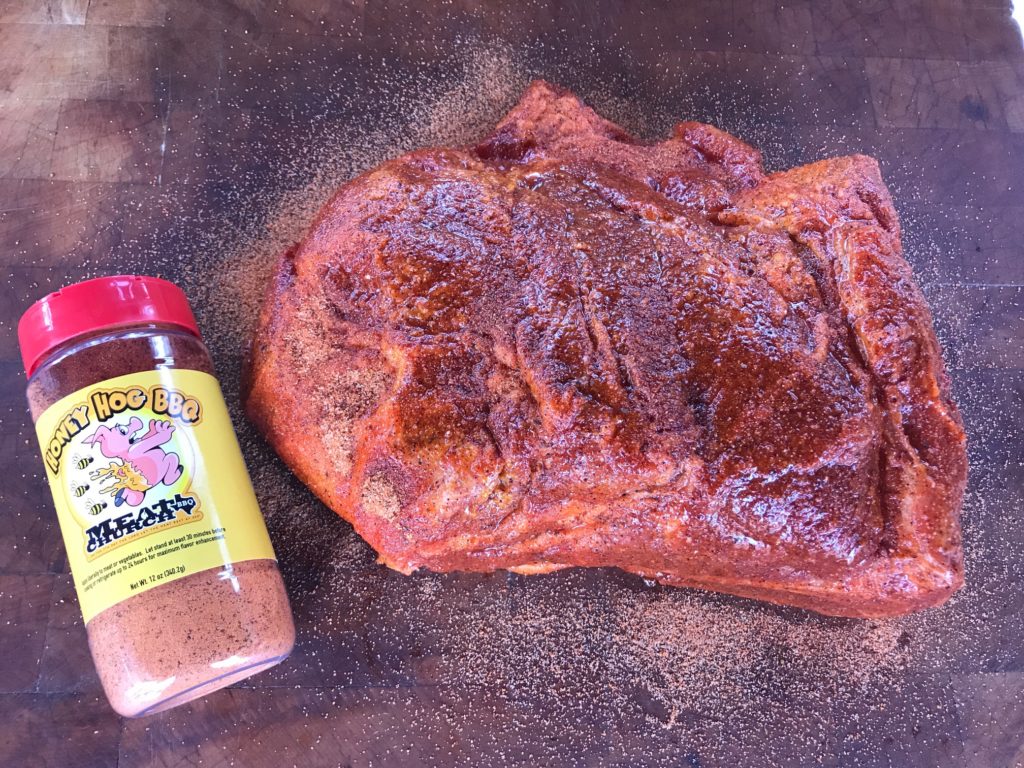We'll start with the age old pairing of salt and pepper. Some argue that it can't be beat, and we agree that when it comes to a perfect steak that this classical combo reigns supreme. But, what would life be without a little flavor experimenting? Read more below to check out how to expand your seasoning smarts.
So Many Seasonings
After salt and pepper, theres a whole wide world to explore. Depending on the type of food you're serving up, your rub regimen may differ. If you're doing a barbecue style meat such as pork shoulder, ribs, brisket or the like, it's recommended to rub your protein heavily, wrap it up, and let it hang in the fridge for a few hours. This achieves two things: wicked flavor penetration from the herbs and spices, and the rub gets super-sticky which turns into a delicious crust! Common barbecue rubs go heavy on sugar, salt, garlic powder, onion powder, paprika, mustard seed and more.
For smaller cuts, like fish, chicken breast/thighs, steaks, pork tenderloin, and the like, you can season and cook right away. A lot of peeps in our #anovafoodnerd Facebook group even season AFTER the cook and before the sear with great results.

Behold the Brine
Beyond the traditional surface seasonings, there's a way to get flavor into the very center of every bite. A brine seasons the food while improving tenderness and flavor with additions such as herbs, spices, sugar, and more. The most common types of brining involve submerging the food in a super-salty solution for up to 24 hours. For an average size turkey, 12-14 pounds, add 2 cups of salt to a gallon of ice water, submerge the bird, and brine away. If you wanna get down and nerdy, 6% salt in relation to the bird's weight (6g of salt for every 100g of food) is a great place to start. All that's left is a sous vide cook to perfectly-prepare the turkey! Brining works best with larger cuts of meat. Instead of just a flavorful surface you get a flavorful surface AND interior because of the salts penetration into the proteins center.
The second type of brine is a dry brine. Very similar to the results of a wet brine, we forego the water and apply a healthy coating of salt directly to the surface of the meat, let it hang out uncovered in the fridge, and after 12-24 hours, we get a very similar result to a traditional wet brine with flavor brimming from edge to edge. This works great on steaks, chicken, pork chops/loin, etc! Start with 1 % kosher salt in relation to the food weight (1g of salt per 100g of food weight), and adjust from there. It's common to settle between 1 and 3% depending on the desired flavor outcome.

Store Bought is A-Ok
While there is definitely a sense of pride involved in blending up your favorite flavors into a custom rub, there's nothing wrong with hitting your spice aisle at the grocery store and finding a new favorite seasoning. From regional specific spice blends, to barbecue rubs, sweet, savory and anything in between, a pre-packaged store bough rub is a great way to jazz up any cook. They cost a few dollars, are available at any grocery store, last a while, and allow you to skip the guesswork of building your own flavor profile.

What are Your Seasoning Secrets?
As always, we rely on our superb #anovafoodnerd family for countless inspirations and recipes! Share your seasoning tricks below, or on social media using #anovafoodnerd! Check out the world's largest collection of sous vide recipes for times and temps to nail all your cooks.

